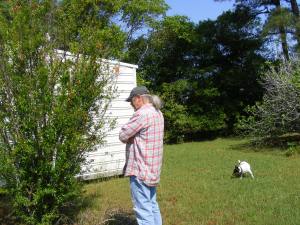Unruly children are not a problem solely relevant to current times, although most agree the situation worsens with each passing generation. The following is extracted from “Nurse”, Vol. 4, June 1916. Parents who let their children do as they please do the children no favor, they leave the naughty ones with no self-control, self-respect, or respect for others or the property of others, while parents who establish parameters for proper behavior raise children whom everyone enjoys being around and who go on to live productive lives. Let’s see what our expert had to say in 1916.
“Several years ago, it was my privilege to travel with four children who had been well brought up by very wise parents. In the course of our journeying we met a little woman whose one small child was a nuisance and an annoyance to all on shipboard and a source of much irritation generally. One day that mother came to me and laying her hand appealingly on my arm, said: ‘How do you make your children so nice?’
The mother of ‘my children’, as the little woman called them, and I had often talked this matter over so my answer was ready. We believed it was because, from the day of their birth, they had been taught the blessed lesson of obedience. The woman looked at me vaguely, as though she did not quite understand the language I spoke, and then said, in a tone of despair, ‘I suppose I ought to begin to teach Janie to mind me, but I had not thought her old enough.’ Poor woman! She had lost as many years as Janie was old. Poor Janie! She was badly behaved only because she had not been taught otherwise, and, if her father and mother at that late date were to take her training in hand, it meant a reconstruction period such as parents and child need never have encountered had they had the proper understanding of each other from the very beginning…’”.
The author went on to quote a book entitled, “The Training of Parents”, which said that the well-behaved child was not a natural-born angel; “he is well behaved because he has been well taught. Neither is the child who misbehaves, a natural fiend; he, too, is the result of his home training. That may sound very hopeless to those who have tried and tried and yet failed, but remember this: if you have failed, it is not because your child is impossible or unteachable, as so many parents claim. Of course your child loves you—that goes without saying—but have you taught him to mix with love that ingredient, respect, which is just as necessary to his happiness and yours?”
Parents of young children, ask yourselves this: Are my children sweet and loving, well-behaved and a pleasure for me and others to be around, bringing joy and pride to my life, or do you say no, maybe several times, but give in at the end and allow the child to do as it pleases? If the latter, you do the child an injustice. I will leave you with an example from our 1916 article.
A young child came to the table, put a foot onto the tablecloth, quite inappropriately, an act made worse by the fact the parents had guests witnessing the uncouth behavior. The child’s mother asked repeatedly for the child to remove its foot from the table. “Oh, but the table isn’t the place for Molly’s feet. Now, that is the place for Molly’s feet—right—down—there. No, I said not on the table—not—on—the—table, NOT—ON—THE—TABLE! Oh, well, it won’t hurt the tablecloth any”.
The mother had set the stage for Molly to be headstrong and unruly for life by not enforcing discipline when the child refused to do as she instructed, much the same as modern parents are to blame when children are noisy, boisterous, argumentative, and altogether unpleasant for all in earshot.





















You must be logged in to post a comment.